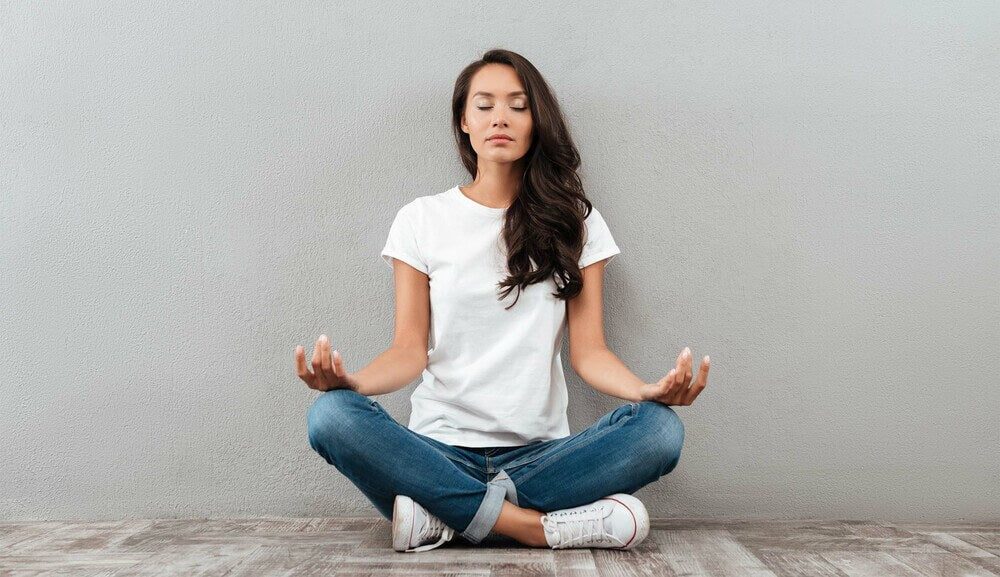An intro to transcendental meditation and more for everyday wellness
Posted on October 11, 2021
Written by: 100% PURE
®
Have you wanted to try meditation, but struggle to quiet the mind? Meditation is more about being present and allowing our thoughts to move freely, but many of us feel like we’re doing meditation “wrong” because we get distracted or our thoughts go racing. It’s easy to let a few ‘unsuccessful’ attempts at meditation throw us off, but the benefits of meditating make finding a solution totally worth it.
Luckily in this case, we have more than 1 solution – we have 4!
Yogis and meditation pros often throw around terms like “clear head” and “mindfulness”, but the lines defining meditation tend to be blurred. What is meditation? Where does this practice come from?
Much like one of the most popular forms of exercise – yoga – meditation originated in India in the BC era. It was a form of therapy practiced and documented for centuries, and was as relevant to humans of the past as it is for us today.
By the time meditation had migrated to the western world and entered mainstream popularity, it was the early 1970s and a type of meditation called Transcendental Meditation was creating a stir. A certain English foursome had famously traveled to India to experiment with this practice.
Seeing how this technique combines mindfulness, affirmations, awareness, and promotes restfulness, it’s easy to see why interest in transcendental meditation (and meditation in general) continues to grow.
Once acclimated to the practice, meditation can feel like a vacation for your mind. Rather than focusing on the constant distractions of life – social media, family stress, work worries – we allow our thoughts to stabilize and neutralize. In turn, this allows us the space to enter a calmer state where we’re operating less from control or anxiety, and more from peace and trust.
How does a technique with so much history remain relevant in today’s fast-paced world?
First, the need for peace, harmony, and mindfulness has never left us – even with technological advancements and lifestyle changes. If anything, the way our world has evolved to become richer but more demanding has put more pressure on the mind to be rapid and reactive. Meditation is a way to unplug – to remove the noise of daily reminders, work obligations, to-do lists, and the rapid-fire stimulation of platforms like TikTok and Instagram.
To help meditation adapt to our tech-driven world, developers have made practice more accessible through just about every platform. Apps like Headspace and Calm feature guided meditations, music and frequency playlists, and thought-provoking prompts to heighten our ability to be present. Ironically, with these apps plugging in can enhance our ability to disconnect.
As we explore meditation styles, it’s important to remember that meditation isn’t about perfection. There’s a lot of conflicting information out there about how long we must meditate, how to get started, even what direction to face! Ultimately meditation is about building a clearer connection to the mind, and we can do that with very little time and meaningful intentions.
Learning about the different types of meditation practices has got to be one of the more fun elements of the subject. There are so many different ways to achieve that deep calm and mental reset. We can not only find a style that’s perfect for us, but we can create a custom routine that fits our schedule or needs and combines different styles.
Here’s a list of developed meditation styles that are popular around the globe:
Mantra Meditation
Spiritual Meditation
Focused Meditation
Progressive Relaxation
Movement Meditation
Mindfulness Meditation
Loving-kindness Meditation
Transcendental Meditation
The way that we practice yoga, meditation, or any form of physical therapy today has to meet certain conditions for most of us to stick with them. These practices need to be readily accessible, affordable, with measurable goals and results.
The great thing about meditation is that it can literally be free – all it takes is time and commitment. Based on the average persons’ busy lifestyle, here are 4 impactful forms of meditation to try today:
#1: Guided Meditation
Like the name suggests, this is a type of meditation that utilizes a caregiver. By offering calm energy and gentle direction, they’re able to help the audience to stay focused. Those with super busy lives who might be after a workout that can be done at any time will love guided meditation. And even if you don’t ‘feel’ like you’re doing a ‘good’ job with meditation, keep at it. A consistent meditation routine has actually been proven to add white matter to our brains (an important tool against early onset dementia and other risks).
#2: Movement Meditation
Commonly used in a synonymous sense with yoga, movement meditation is about moving the body to quiet the mind. It doesn’t have to be the pretzel-like bends and acrobatic balancing tricks that skilled yogis perform – movement meditation can be any soothing repeatable act.
Quiet time alone knitting, or a sunset stroll through the park are a few examples of movement meditation. For those of us that find it difficult to sit still and usually prefer high-intensity exercises, this may be a great option.
#3: Mantra Meditation
This is one many of us may already do, by practicing daily affirmations that build positive energy and confidence. Mantra meditation is a great way to take that pre-existing habit and build on it. Typically known as the classic, “om,” mantra meditation is about awareness. Using a word or short phrase and chanting that during practice is a great way to experience a calmer mind.
#4: Transcendental Meditation
Transcendental meditation seems to use both the body and mind to achieve mindfulness. A comfortable position that can be held with relative ease is important. This technique builds on mantra meditation in chanting the same phrase or sentence repeatedly as well. This meditation technique allows us to make the practice our own, making awareness and alignment so much easier. This is a practice best performed daily and is used to improve self-esteem, sleep patterns and physical calm.
If you’ve read this far, you’re ready to try meditation! Helpful hint: some healthcare providers offer free access to the Calm app, while some companies offer Headspace to their employees. No matter which sort of meditation you practice, know that you’re investing in the long-term success of your mental health. Good luck!

